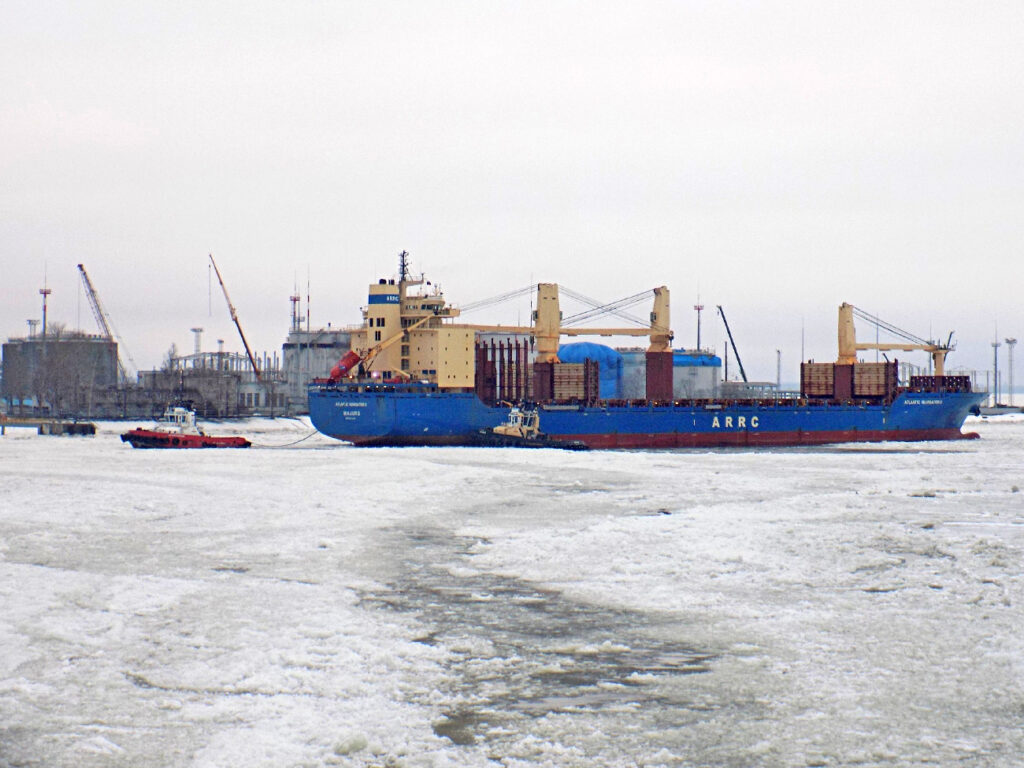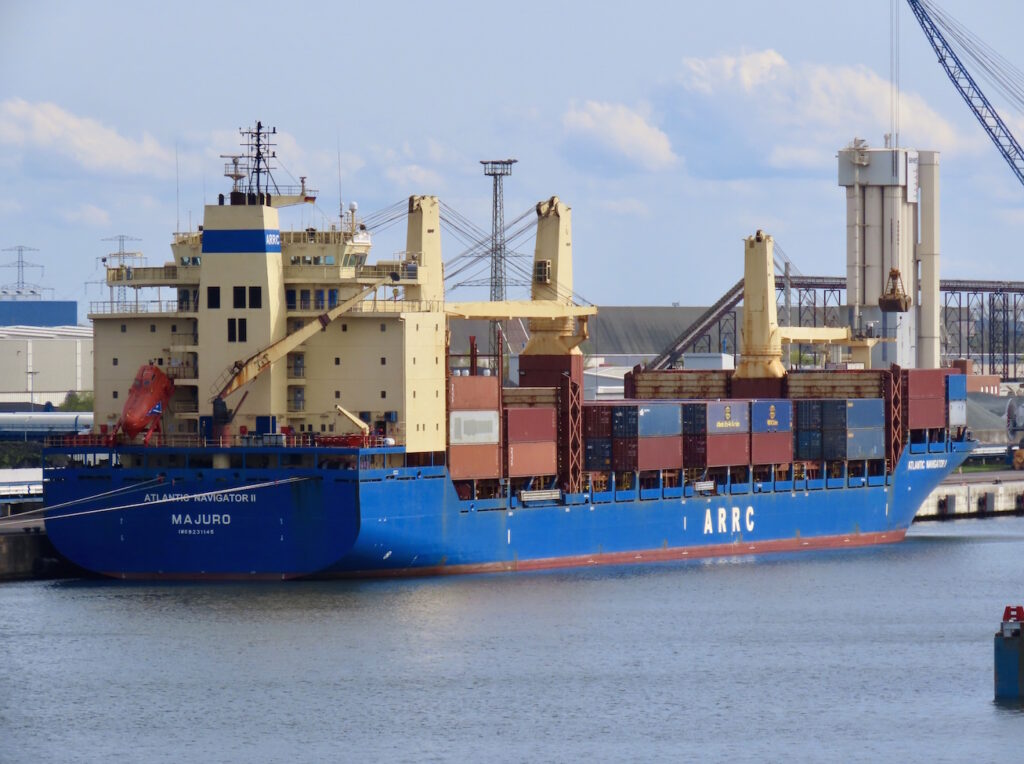1. Departing St Petersburg, Russia, on 29 February 2024 bound for Philadelphia, USA, the Atlantic Navigator II made an unscheduled stop in Rostock, Germany, on 4 March due to damage to its propeller.
She left Rostock on 19 April after repairs and a customs inspection. This multipurpose cargo ship is carrying 241 containers of birch plywood from the exploitation of Arctic forests and enriched uranium.
Despite the war in Ukraine and tensions between the United States of America and the Russian Federation, trade in nuclear materials has not stopped, and Russian enriched uranium continues to supply fuel for some American nuclear power stations.
The double game of war and business also remains in force in the European Union, not only in the area of atomic fuels but also in the area of waste. The agreement of 21 June 2012 between Andra (the French national radioactive waste management agency) and Rosatom, the Russian atomic energy agency, on exchanges of expertise on waste processing and storage is still in force. On the other hand, the suspension of imports of forestry products is one of the sanctions imposed on Russia by the European Union.
From the strict point of view of maritime safety, and given the increased risk of terrorism, it is astouding that highly radioactive materials should be transported across the Baltic and Atlantic Oceans on board a multi-purpose cargo ship that was detained in Fremantle, Australia, in 2008, and which has since accumulated 24 deficiencies in Montreal (2015), Antwerp (2016), St Petersburg (2017 and 2019) and Baltimore (2023). Nor does the transport of combustible plywood and radioactive materials on the same ship meet all safety requirements. In the event of an accident, fire or any other misfortune at sea, responsibilities will be difficult to establish between the flag country, the Marshall Islands, the Norwegian classification society, the Canadian shipowner and the Russian loaders.
The Atlantic Navigator II is expected in Philadelphia on 4 May. She was due to reach Baltimore afterwards, but the collapse of the Francis Scott Key Bridge prevented her from doing so.
 Atlantic Navigator II, February 23, 2024, Saint Petersburg (Russia).
Atlantic Navigator II, February 23, 2024, Saint Petersburg (Russia).
© WH66-Fleetphotos
 Atlantic Navigator II, April 7, 2024, Rostock (Germany).
Atlantic Navigator II, April 7, 2024, Rostock (Germany).
© Tim Becker
2. In his Atlas de la France toxique (Atlas of Toxic France) published in 2016 by Arthaud, in the chapter “Nuclear power plants: will they withstand external aggression?”, Robin des Bois writes that “Penly, Paluel and Flamanville, the three atomic sisters of Normandy, are exposed to the fury of the ocean.” “Wedged on platforms that did not see the rise in sea level and submergence coming, the nuclear islands are floodable from the outset.” “EDF, shovel in hand, is defending itself with low walls, dikes and emergency dredging.” “All the way down at Flamanville, the threat of “the” wave slamming against the cliff sends shivers down the spine.”
On Tuesday 9 April, oceanic storm Pierrick attacked the base of the access road to Flamanville’s two existing nuclear reactors and the EPR reactor nearing completion. A cavity pierced the roadway (approximately 4 by 4 metres and 8 metres deep). This kilometre-long road is wedged between the cliffs and the Channel Sea. It is a strategic road. Exceptional convoys, new fuel for the three reactors, irradiated fuel and heavy packages weighing several hundred tonnes, such as the EPR vessel (425 tonnes), pass along it.
This collapse of the nuclear road (formerly the Iron Mine road) has left the ASN (French Nuclear Safety Authority), the nuclear watchdog, unmoved. The ASN is not interested in traffic problems. It left it to the technical services of the Manche department to fill in the hole and temporarily consolidate the foot of the dyke locally.
Robin des Bois believes that this event is a sign of the structural fragility of the access road to the three nuclear reactors at Flamanville. The safety of nuclear power plants, like that of industrial plants subject to the Seveso directive, goes beyond fenced-in perimeters and also takes place in access roads. The NAtural risks that can trigger TECHnological risks (NATECH risks) are insufficiently taken into account by State services, local authorities and operators. The hole in Departmental Road 23 should have been classified as at least level 1 on the International Nuclear and Radiological Event Scale (INES).
Above all, a geotechnical assessment of the nuclear road must be launched as soon as possible. It must be made safe or closed, otherwise sooner or later it will be undermined by storms, triggering accidents with considerable human, environmental and economic consequences.
 Imprimer cet article
Imprimer cet article








